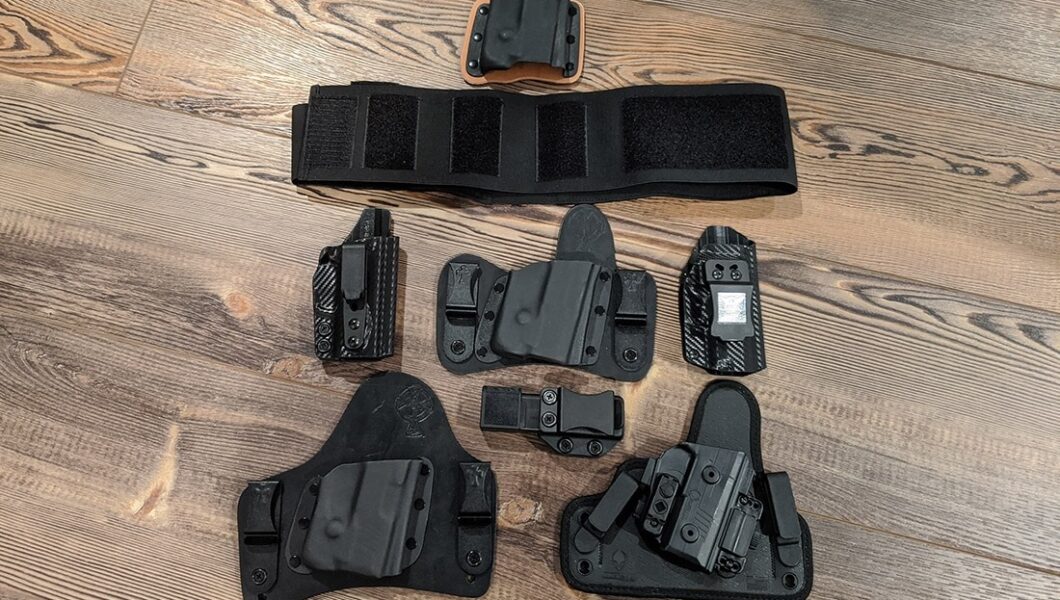Concealed Carry Holsters: A Comprehensive Guide:
Concealed carry holsters play a crucial role in the lives of individuals who choose to exercise their right to bear arms responsibly. As the demand for concealed carry continues to rise, selecting the right holster becomes paramount. In this guide, we will explore the key factors to consider when choosing a concealed carry holster.
For more information about this site kindly visit on “aliengearholsters.com”.
Choosing the Right Holster Style:
The first step in finding the perfect concealed carry holster is understanding the various styles available. Common options include inside-the-waistband (IWB), outside-the-waistband (OWB), shoulder holsters, and pocket holsters. Each style caters to different preferences and body types, influencing factors such as comfort, accessibility, and concealment.
Comfort and Concealment:
Comfort is a crucial aspect of daily concealed carry, as an uncomfortable holster may dissuade individuals from carrying regularly. IWB holsters, worn inside the pants, often provide better concealment but may sacrifice some comfort. On the other hand, OWB holsters offer more comfort but can be challenging to conceal without the right clothing. Striking a balance between comfort and concealment is essential for a positive concealed carry experience.
Materials Matter:
The choice of materials significantly impacts the durability, comfort, and maintenance of a concealed carry holster. Common materials include Kydex, leather, and nylon. Kydex is renowned for its rigidity and retention capabilities, while leather holsters conform to the body over time, enhancing comfort. Nylon holsters, often less expensive, are lightweight but may lack the durability of other materials.
Retention Mechanisms:
A reliable retention mechanism is crucial to ensure that your firearm stays securely in the holster, yet is easily accessible when needed. Retention can be achieved through friction, straps, thumb breaks, or a combination of these methods. The level of retention should strike a balance between security and ease of draw, allowing for a quick response in a self-defense situation.
Consider Your Wardrobe:
Concealed carry should integrate seamlessly with your everyday wardrobe. Factors such as clothing style, climate, and daily activities influence the choice of holster. Appendix carry may be suitable for those who prefer a front position, while 3 o’clock or 4 o’clock positions may be more comfortable for others. Experimenting with different holsters and positions will help you find what works best for your lifestyle.
Training and Practice:
Regardless of the holster chosen, proper training and regular practice are essential. Familiarity with your holster and firearm, along with honing your drawing and reholstering skills, ensures a safer and more effective concealed carry experience. Seek professional training to enhance your skills and build confidence in your ability to handle your firearm responsibly.
Maintenance and Inspection:
Regular maintenance and inspection of your concealed carry holster are imperative. Check for wear, damage, or any loss of retention over time. Clean your holster as recommended by the manufacturer, especially if it is exposed to sweat, dirt, or other environmental factors. A well-maintained holster ensures the reliability and longevity of your concealed carry setup.
Legal Considerations:
Before choosing a concealed carry holster, be aware of the legal requirements and restrictions in your jurisdiction. Some areas may have specific regulations regarding the type of holsters permitted or where the firearm can be carried. Stay informed and comply with local laws to ensure responsible and lawful concealed carry.
Conclusion:
Selecting the right concealed carry holster involves careful consideration of various factors, from comfort and concealment to materials and retention mechanisms. Your choice should align with your lifestyle, preferences, and legal obligations. Remember that concealed carry is a serious responsibility, and investing time in selecting the right holster is a crucial step toward a safe and confident concealed carry experience.






